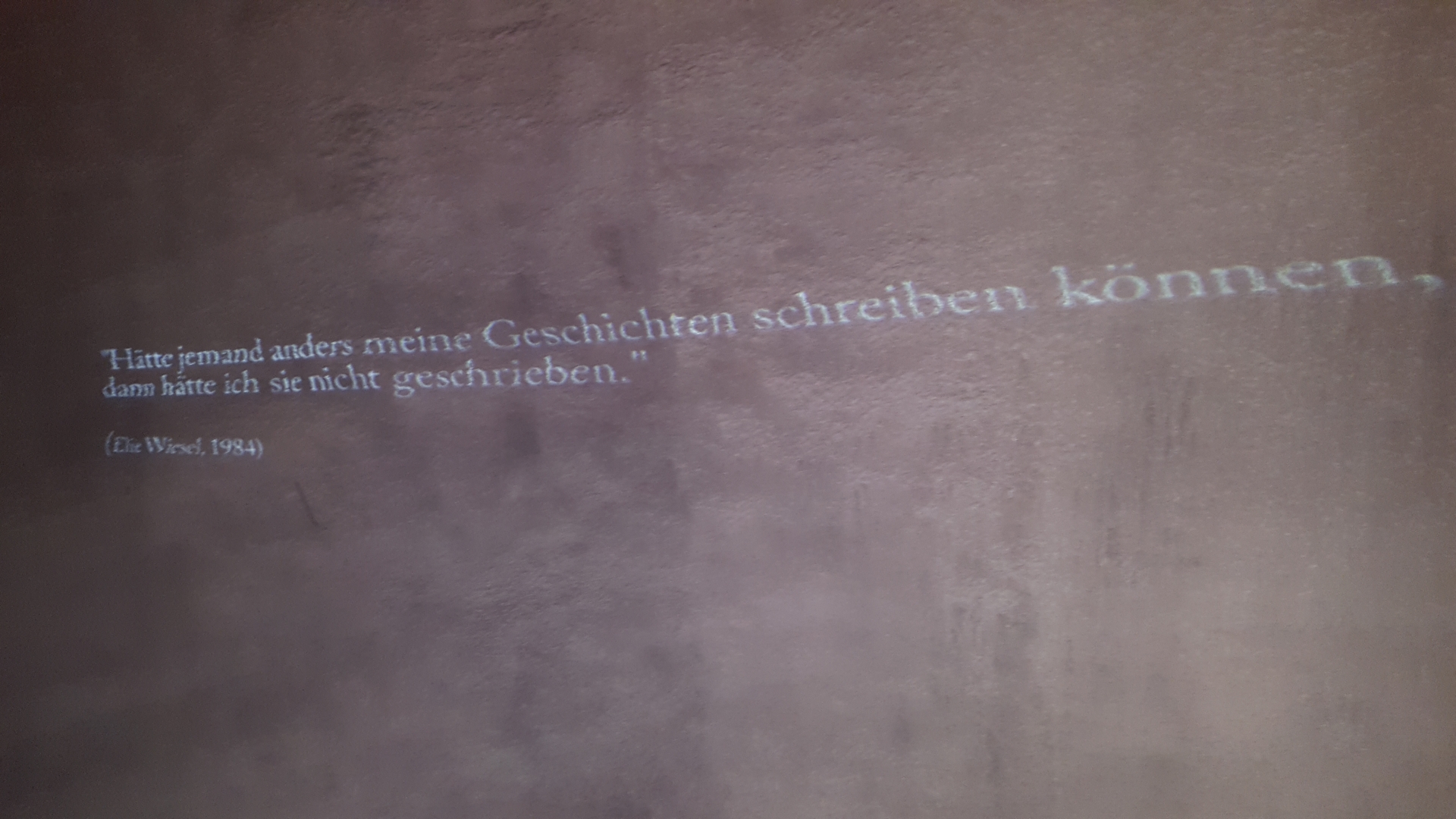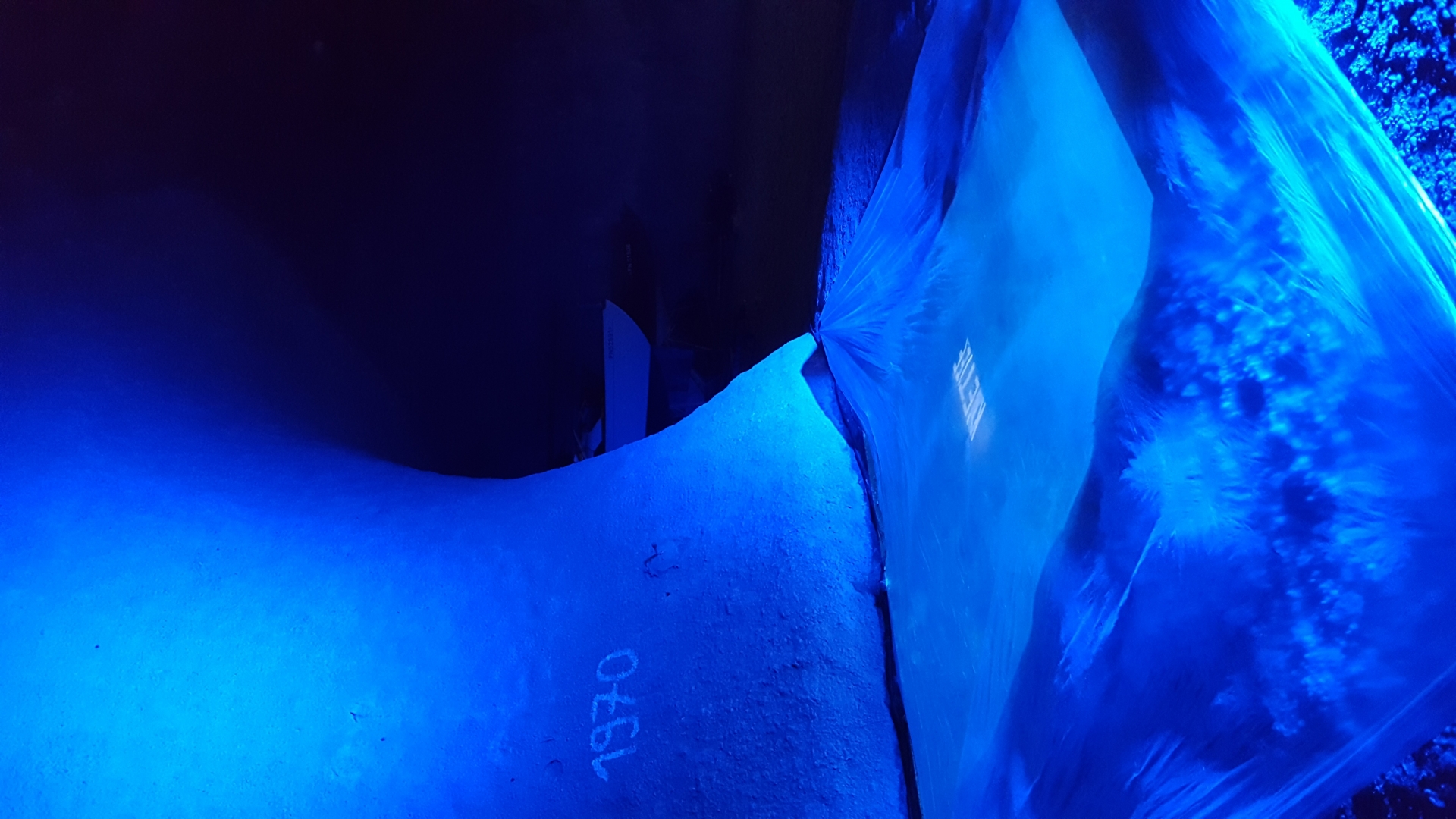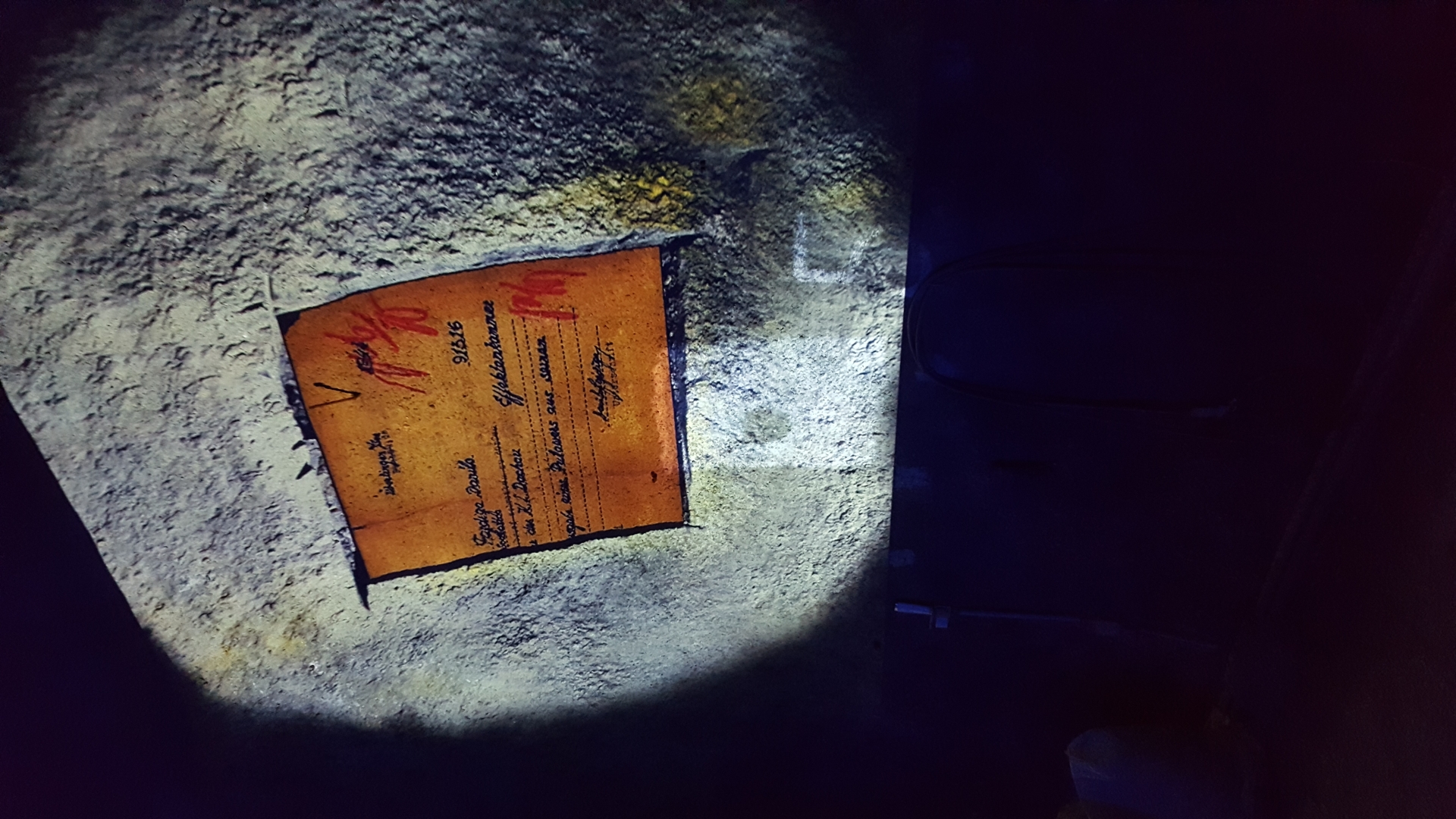- 1The future of memory
- 2Statement Anne-Berenike Rothstein
- 3Memory spaces
- 4Storage media
- 5The evolution of memory media
- 6Statement Aleida Assmann
- 7The digitalization of memory culture
- 8"Pioneers" of memory culture
- 9Discussing the future of memory
- 10Generate important questions
- 11Impressions of the conference
- 12Information about Anne-Berenike Rothstein
- 13Interview Anne-Berenike Rothstein (1)
- 14Interview Anne-Berenike Rothstein (2)
- 15Interview Anne-Berenike Rothstein (3)
- 16Interview Anne-Berenike Rothstein (4)
- 17Impressions of the exhibition
- 18Space, remembrance and witnessing
- 19Video students
- 20Contemporary witnesses in history class
- 21Christiane Bertram in an interview with "Deutschlandfunk"
The future of memory
“The transition from communicative memory, which is generated by contemporary witnesses, to cultural memory is imminent. At the same time, our media exposure is currently and will continue to create or modify our memories. How historical meaning is conveyed, how we connect to history, and how our collective memory culture develops is determined by the digital world”.
How do we secure the future of remembrance? How do we remember in our current day and age, and how will the next generations remember? Our interaction with the past within social collectives ‒ the so-called memory culture ‒ is constantly changing, and it is not only the course of history that affects this interaction: what and how we archive, which contemporary testimonials we pay attention to, and when as well as how memory spaces can be integrated into our everyday reality all strongly influence the interpretation and preservation of the past.
The loss of the last living witnesses of the Holocaust in particular is currently transforming research and practice. At the same time, digitalization is revolutionizing memory preservation and other ‘memory work’ processes. We have taken a closer look at how researchers approach these changes.
The interplay between media and memory culture goes back a long time before the advent of digitalization. Neither the invention of the printing press nor the introduction of electronic media was responsible for connecting media to memory. Writings and drawings on various materials ‒ stone, papyrus, and animal skin ‒ were previously used to record personal memories, which combine to build a collective memory.
Media are external storage structures used to secure memories independent of the individual.They are memory aids that help ensure the continued existence of the social group. But what happens when these storage structures cannot withstand technological and societal developments, thus becoming obsolete in time? For example, during the 1980’s and 1990’s ‒ the beginnings of the new memory culture ‒ the video tape was utilized to record the testimonials of Holocaust survivors. It is a medium that has become outdated since the turn of the last century.
Aleida Assmann on the evolution of memory media
Aleida Assmann, professor emeritus of English literature and literary studies at the University of Konstanz, compares the current situation regarding digitalization to the circumstances in the third century. Due to its limited shelf life, writing on papyrus had to be copied onto parchment, i.e. animal skin ‒ “Everything that did not make it onto parchment was lost. We have to realize that we have experienced a similar cultural situation in the past. If we don't copy video material from VHS tapes to digital media, it will be lost.”
Assmann notes that only one medium is visibly unaffected by this transition: “Books simply persist in libraries and patiently bide their time as advancements in media development continue to be made.” For the English language and literary scholar, this "simply persist" is of particular importance. The constant innovation of media storage formats and the associated selection thereof should not only lead us to preserve information that is deemed relevant in current social contexts: “Archives are important in that they contain more than what our narrow selection criteria call for, more than what we need and constantly use.”
To this effect, Professor Assmann introduced the distinction between stored memory and functional memory. She emphasizes that we should always be able to place memories in the background without completely forgetting them. “We shouldn’t limit ourselves to only two options ‒ either to remember or to forget. Instead, we should be looking at a complex and multi-staged process of forgetting.” Archives contain much more than one needs. They always allow us to make new discoveries, but they also have their limits. For example, it took a long time for the experiences and achievements of women to be recorded in archives. Furthermore, the storage of books is more often than not constrained by space limitations.
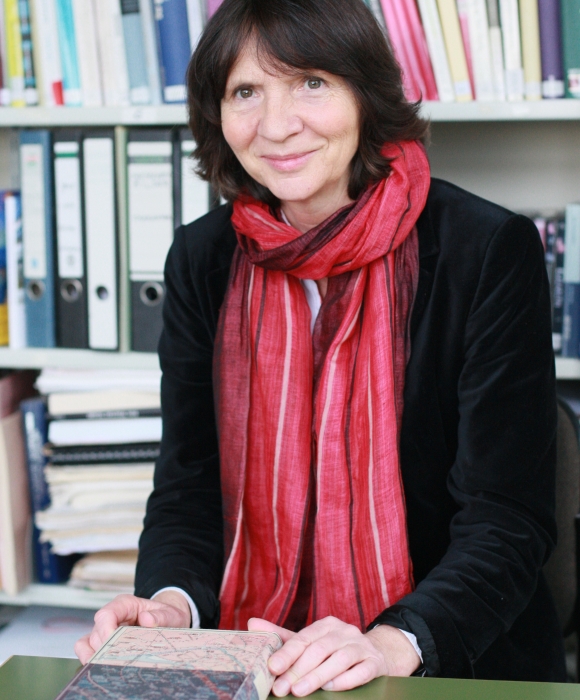
“Everything that did not make it onto parchment was lost. We have to realize that we have experienced a similar cultural situation in the past. If we don't copy video material from VHS tapes to digital media, it will be lost.”
Does this mean that digitalization, which enables us to secure seemingly infinite amounts of data on a small chip, will make memory work easier for us in the future? “Simply expanding the storage capacity certainly has an initial positive effect,” says Assmann. But she follows up this argument by calling attention to the risks associated with this development: "But this large storage capacity is also dangerous. The amount of data grows and grows and takes on daunting dimensions. By using search algorithms in our digital archives, we are consigning our own questions to the search machines and accepting the fact that others may utilize our data.” Loosing track of one’s data not only leads to ceding control, but also to relinquishing the space for reflection and thought, which allows us to work with the memories instead of just archiving them.
Here, Aleida Assmann quotes Montaigne: “I had rather fashion my mind than furnish it.” She also knows the feeling of throwing something away and needing it again the next day within a surprising context. Nevertheless, one cannot and should not keep everything because “ultimately it is not the stored data that counts, but the knowledge that we generate from it.”
Discussing the future of memory
Memory culture has become a well-known concept in both Konstanz and beyond as a result of the work of both Aleida and Jan Assmann. Just last year, this long-standing research team from the University of Konstanz was awarded the Peace Prize of the German Book Trade for their work on how to approach and deal with memory. After Aleida Assmann retired, there were, however, concerns about the future of memory work in academia, remembers Professor Michael Schwarze, Dean of the Faculty of Humanities at the University of Konstanz.
The conference “Entgrenzte Erinnerung” (unbounded memories), which took place on 25 and 26 January 2019 on Mainau Island clearly demonstrates: there is no reason to worry: While only a few people in caps and coats were walking through the bare island gardens, the conference room was packed with guests. As the first conference to connect research with memorial work in this fashion, the organizers were able to attract speakers and interested guests to Lake Constance from all over Germany and beyond.
The topic to be addressed, as Aleida Assmann succinctly said, is the “question about the future of memory.” Since this is a question that cannot be answered in just one way, it was important to the conference organizers Dr Anne-Berenike Rothstein, lecturer in the Department of Literature, Art and Media Studies at the University of Konstanz, and Dr Stefanie Pilzweger-Steiner, academic consultant at the Dachau Concentration Camp Memorial Site, that the event participants were provided the opportunity to interact in an interdisciplinary way while interlinking relevant research perspectives with practice-oriented projects.
A particular focus was placed on the mediatisation that affects memory work in various ways: from storing and archiving information to modified forms of perception as well as opportunities to access memories from any location. Media, especially the development of digital technologies, open up new possibilities. But they also generate important questions:
How can archivists keep up with the development of data storage devices? How can recorded memories be successfully placed in new contexts? What does it mean to be a contemporary witness in this day and age? How can media create both experiences and historical understanding while simultaneously allowing users to deal with memories in a critical way?
These are just a few general questions in regard to remembrance. The discourse, however, is strongly influenced by historical events and the current social situation, so that the memories of the last contemporary witnesses of Nazi crimes become the focus of attention.
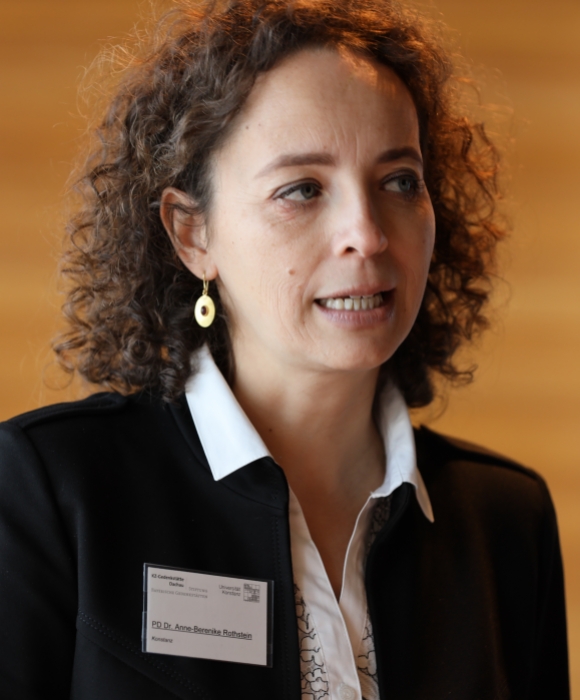
Dr Anne-Berenike Rothstein (Privatdozent), senior instructor with tenure at the Department of Literature, Art and Media Studies at the University of Konstanz, worked together with Dr Stefanie Pilzweger-Steiner from the Dachau Concentration Camp Memorial Site in organizing the conference on Mainau Island. Experts from academia and the practice-oriented area of memorial work discussed both perspectives and projects on mediated, and especially, digital memory culture.
In addition to this conference, Anne-Berenike Rothstein is also involved in other transfer projects between science and society on the topics of memory and testimony. She is currently leading an international research group on "Tattoos as Memorable Palimpsest – Identification Levels and Potentials in War- and Post-War Periods." In the interview she explains how important the continued development of media is for memory work and emphasizes the need for transdisciplinary collaboration.
Interview with Anne-Berenike Rothstein
Dr Rothstein, as part of your transfer project MEMOZE, you worked with the Dachau Concentration Camp Memorial Site to organize a conference on new media forms of memory and testimony. It's called “Entgrenzte Erinnerung” (unbounded memories). What does this title mean to you?
Anne-Berenike Rothstein: “Digital media allow us to approach memory in new ways, open up traditional boundaries of spatial archiving. Personal and public remembering is a fluid process. With “Entgrenzte Erinnerung”, we address the fact that our interaction with the past in this digital age is changing. At the same time, we acknowledge the emergence of new memory collectives, spheres, communications and more. For me, my trip to Ljubljana to interview one of the last survivors of the Überlingen-Aufkirch concentration subcamp – who was forced to work in a tunnel system known as the Goldbacher Stollen – allowed me to personally experience “unbounded memories.” Previously, I had utilized a purely scientific approach regarding the topic of testimony. The testimony from Anton Jez, a remarkable survivor, both broadened my perspective and significantly enriched my work.”
Looking back on the topics discussed at the conference: Does the development of new media forms enrich sites exhibiting collective memory such as museums and memorials, or does it create competition with them?
Dr Anne-Berenike Rothstein: “As the conference contributors impressively demonstrated this past January, digital media can certainly enrich traditional sites of remembrance. Even when such places are to remain – as far as is possible – in their authentic condition, and witnesses as well as testimonies continue to be embedded there, we still have to acknowledge the fact that in today’s world ‘memory depends on and is influenced by media’, as Astrid Erll describes it.
Using social media channels, for example, can help us to integrate younger audiences into the current memory discourse. Furthermore, augmented reality projects and apps used in places where historical material is not available make it possible to experience such locations in new ways. Finally, we can take advantage of digitalization in order to develop connections between and deeper understanding of broader historical contexts and relationships.”
Connections and understanding are fitting words at this point. What led you ‒ as a researcher ‒ to begin your collaboration with colleagues who are carrying out memorial work?
Anne-Berenike Rothstein: “The transfer of research results into society is something that is important to me. The changing memory culture is a very relevant topic in our day and age. This collaboration is the result of my transfer project on strategies for the medial communication of memory and testimony, which is supported by the German Excellence Initiative and the Transfer in Teaching programme at the University of Konstanz.
While carrying out research in the archives of the Dachau Concentration Camp Memorial Site, I met Dr Stefanie Pilzweger-Steiner, the academic consultant there, and together we developed the idea behind our collaboration. Our aim was to organize an interactive event where both academics and experts in the area of memorial work would be able to discuss changes in the memory culture.”
This transfer project did not only benefit from scientific contributions. Students were also invited to present artistic projects developed in the course of seminars that you taught. How important is media art in your collaboration project?
Anne-Berenike Rothstein: “In the context of my university seminars, I worked together with Mona Rabofsky, a media artist from Vienna, Austria, to come up with ideas on how to transfer scientific knowledge. We decided to combine artistic and digital approaches. The result was our evening event entitled “Entgrenzte Erinnerung – Künstlerische Positionen zu Erinnerung und Zeugenschaft im digitalen Dialog” (unbounded memories – artistic interpretations of memories and testimony in digital dialogue), during which students used their cultural studies knowledge about memory spaces and testimonies to present seminar projects that were not designed to evoke the terror that was experienced at this location, but to utilize the space to provoke thought and discussion.
Depending on their own study interests within the areas of literature, art and media studies, my students looked at the nature of the place itself, how the place can be viewed or reflected upon, as well as the significance of language and testimony in the memory space. This approach is important, as it presents a different form of visual communication that specifically aims to immerse the audience."
Space, memory and testimony
The evening event is the product of the transfer seminar “Gelebte Geschichte ‒ neue literarische und mediale Dimensionen von Erinnerung und Zeugenschaft” (living history ‒ new literary and media dimensions of memory and testimony) from the 2018/2019 winter semester, during which students worked with the media artist Mona Robofsky for the purpose of developing artistic projects about space, memory and testimony. To this end, the Goldbacher Stollen – a tunnel excavated by Nazi prisoners during the Second World War in the town of Überlingen near Konstanz – was selected as an exhibition space because of its historical relevance and its potential to promote collective memory.
Both aspects were incorporated into the students’ projects: Josefine Honke, a seminar participant and doctoral candidate in the doctoral study programme in Literature, for example, aimed to use poetry to fashion an "auditory memorial stone" for the concentration camp prisoners who had to create this space for military purposes. Others worked with text or images, sometimes using stories, sometimes emotions and sometimes highlighting questions.
Master’s student Tomke Blotevogel wanted her work to provoke thought and reflection: “I wanted the visitors to consider to what extent they perceive themselves as witnesses or whether the physical space itself can be regarded as a kind of witness.” For Tabea Widmann, seminar participant and doctoral student, the search for answers and understanding is at the core of cultural memory studies and what our generation is all about. Art is a great help in this search, says Josefine Honke: “It makes that what we explore accessible in other, perhaps more empathic ways.”
In the video, the participants explain how they were able to benefit from the project’s transfer focus (in German only).
Contemporary witnesses in history class
Professor Christiane Bertram, junior professor of didactics in the social sciences at the Binational School of Education (BiSE) at the University of Konstanz, addresses the communication of memory by contemporary witnesses in regard to both direct exchange and communication through various forms of media. In a large-scale empirical study – for which she was awarded the 2018 publication prize of the Society for Empirical Educational Research (GEBF) in Germany – she evaluated the impact that living contemporary witnesses had on history students compared to students who worked with written and recorded contemporary witness accounts in class.
She examined the effect that classroom interaction with contemporary witnesses had on learning in a total of thirty classes. The results showed: pupils are more motivated to learn when they can work with a contemporary witness in person. At the same time, however, they find it more difficult to maintain a critical distance when viewing and reflecting upon the witness accounts. Authenticity and proximity to witnesses are therefore promising aspects for inspiring students, but they can also interfere with transmitting impartial historical knowledge.
Christiane Bertram therefore emphasizes the need to contextualize witness accounts and to discuss any emotional reactions that may be provoked. In an interview with the German public broadcasting radio station “Deutschlandfunk”, she associates the results of her study with the WDR history app "WDR AR 1933-1945". The Westdeutscher Rundfunk (WDR), a German public-broadcasting institution, developed an app that brings contemporary witness testimonials about the Second World War into the classroom through augmented reality (AR) using holograms and animations to modify real-world environments in a realistic way. Christiane Bertram talks about the potential behind this app and addresses the fact that students might experience strong emotions and overwhelming feelings, which could then result in a lack of distance to and critical reflection on the topic.
Christiane Bertram in an interview with "Deutschlandfunk"
